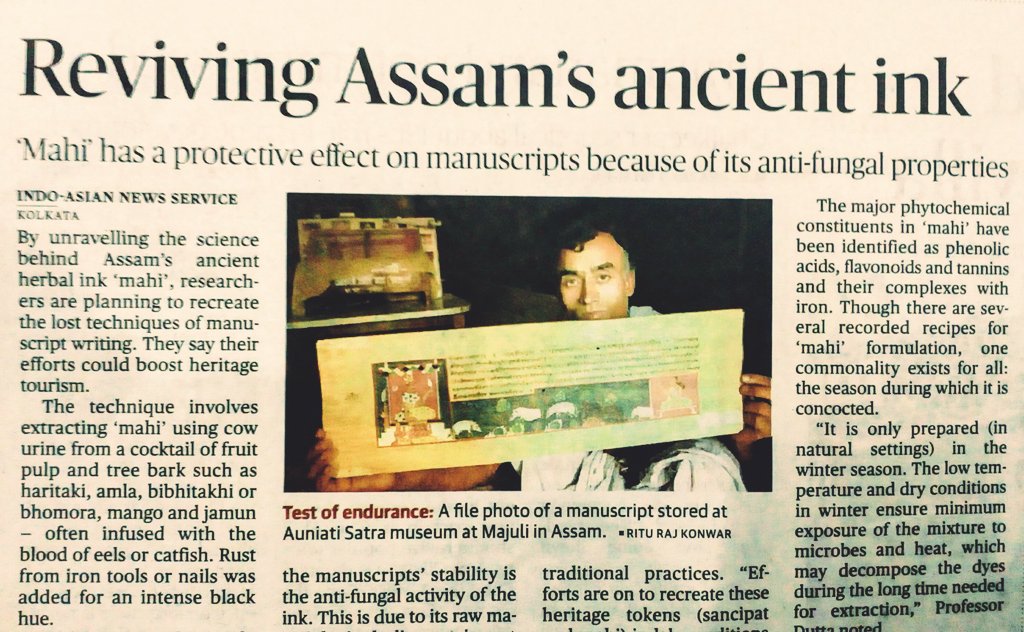By unravelling the science behind Assam’s ancient herbal ink ‘mahi’, researchers are planning to recreate the lost techniques of manuscript writing.
BACKGROUND :
(i) ‘Mahi’ was used in early and medieval Assam for writing on ‘sancipat’ (folios made of the bark of the sanci tree) manuscripts.
(ii) Some folios were gifted by Kumar Bhaskar Barman, the then King of Pragjyotishpura (ancient Assam) to Harshavardhana(ruled 606-647 CE)
(ii) Some folios were gifted by Kumar Bhaskar Barman, the then King of Pragjyotishpura (ancient Assam) to Harshavardhana(ruled 606-647 CE)
ENDURANCE & DURABILITY :
(a) The endurance of the ink is proven by the stability of sancipat manuscripts.
(b) The key factor for this long-lasting bond between ‘mahi’ and ‘sancipat’ is the herbal ink’s resistance to aerial oxidation and fungal attacks.
(c) This is due to its raw materials, including astringent fruits and cow urine, which seems to have a protective effect on cellulosic sancipat against fungal attack in the hot and humid climate of Assam.
(b) The key factor for this long-lasting bond between ‘mahi’ and ‘sancipat’ is the herbal ink’s resistance to aerial oxidation and fungal attacks.
(c) This is due to its raw materials, including astringent fruits and cow urine, which seems to have a protective effect on cellulosic sancipat against fungal attack in the hot and humid climate of Assam.
TECHNIQUE & CONSTITUENTS :
1. The technique involves extracting ‘mahi’ using cow urine from a cocktail of fruit pulp and tree bark such as haritaki, amla, bibhitakhi or bhomora, mango and jamun which is often infused with the blood of eels or catfish.
2. The major phytochemical constituents in ‘mahi’ have been identified as phenolic acids, flavonoids and tannins and their complexes with iron.
2. The major phytochemical constituents in ‘mahi’ have been identified as phenolic acids, flavonoids and tannins and their complexes with iron.


No comments:
Post a Comment